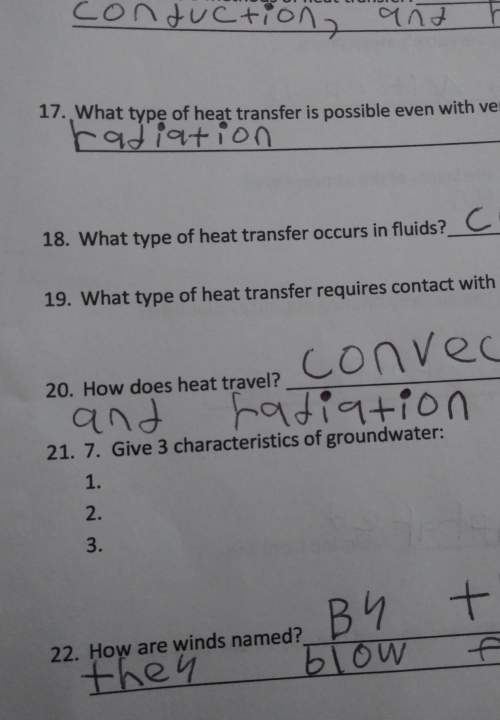
Physics, 13.08.2021 21:30 austinkellylay
A wombat runs south in a straight line with an average velocity of 5 m/s for 4
minutes and then with an average velocity of 4 m/s for 3 minutes in the same
direction.
What is the wombats total displacement?
What is the average velocity during that time?

Answers: 1


Other questions on the subject: Physics

Physics, 22.06.2019 07:30, anonymous1813
Some material consisting of a collection of microscopic objects is kept at a high temperature. a photon detector capable of detecting photon energies from infrared through ultraviolet observes photons emitted with energies of 0.3 ev, 0.5 ev, 0.8 ev, 2.0ev, 2.5ev, and 2.8ev. these are the only photon energies observed. (a) draw and label a possible energy-level diagram for one of the microscopic objects, which has four bound states. on the diagram, indicate the transitions corresponding to the emitted photons. explain briefly. (b) would a spring–mass model be a good model for these microscopic objects? why or why not? (c) the material is now cooled down to a very low temperature, and the photon detector stops detecting photon emissions. next, a beam of light with a continuous range of energies from infrared through ultraviolet shines on the material, and the photon detector observes the beam of light after it passes through the material. what photon energies in this beam of light are observed to be significantly reduced in intensity (“dark absorption lines”)? explain briefly.
Answers: 3

Physics, 22.06.2019 11:00, kayla65u
I'm thinking it's 2 you are asked to explain the earth's magnetic field. which is the best reply? 1. the earth's magnetic south is similar to the north pole of a magnet. 2. the earth's core has a strong magnetic charge similar to the south pole of a magnet. 3. the earth's geomagnetic south is similar to the south pole of a magnet. 4. the earth's magnetic charge is not centered at either pole; it varies based on location.
Answers: 1

Physics, 22.06.2019 12:10, aedelfrance9250
Aspring has a natural length of 8 m. if a 12-n force is required to keep it stretched to a length of 10 m, how much work w is required to stretch it from 8 m to 16 m? (round your answer to two decimal places.)
Answers: 1

Physics, 22.06.2019 17:20, lilzaya510
Properties seen when one one substance changes to another are known as properties
Answers: 1
You know the right answer?
A wombat runs south in a straight line with an average velocity of 5 m/s for 4
minutes and then wit...
Questions in other subjects:

Mathematics, 21.09.2019 12:50

English, 21.09.2019 12:50


Mathematics, 21.09.2019 12:50






English, 21.09.2019 12:50


















